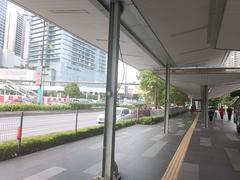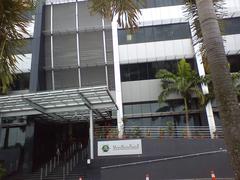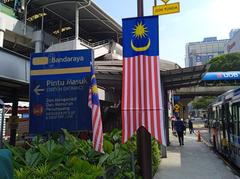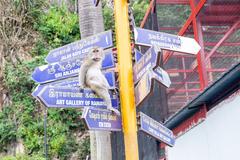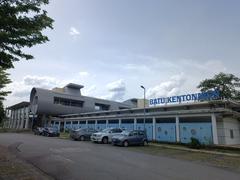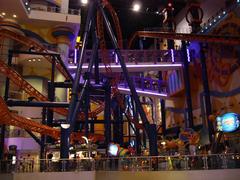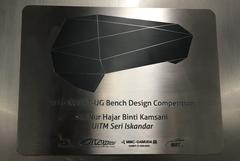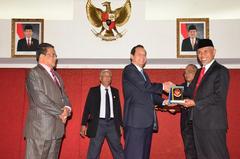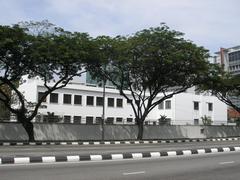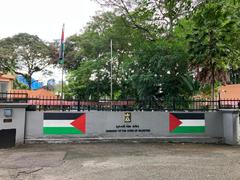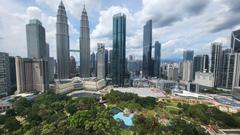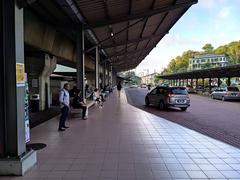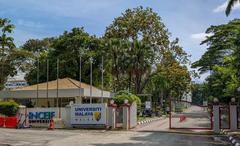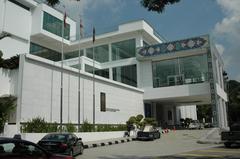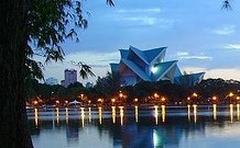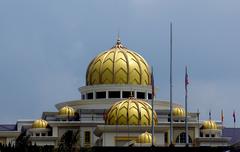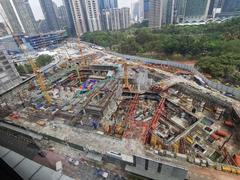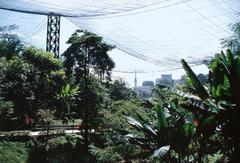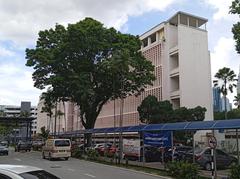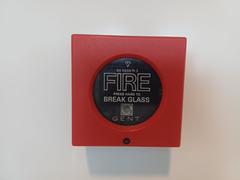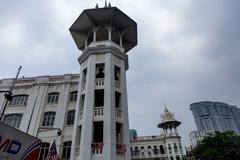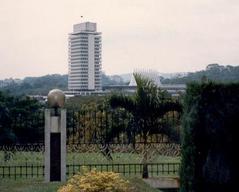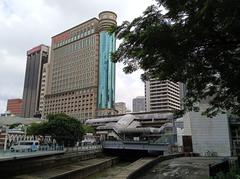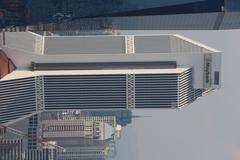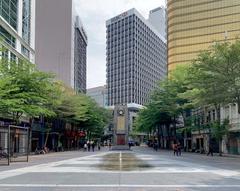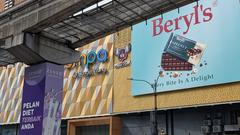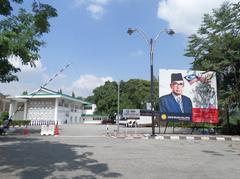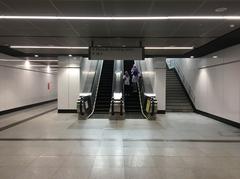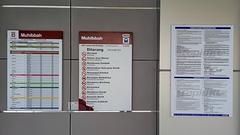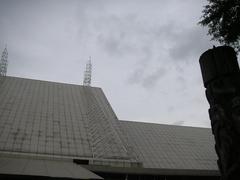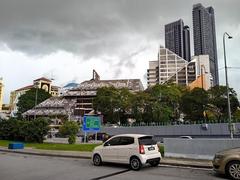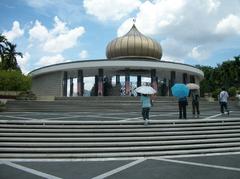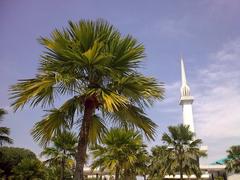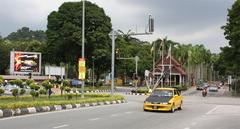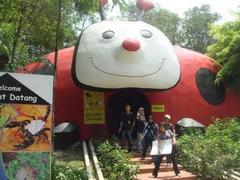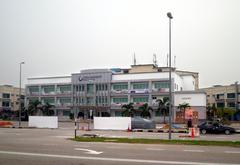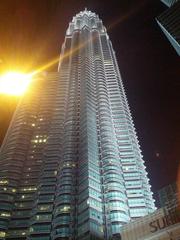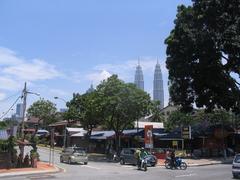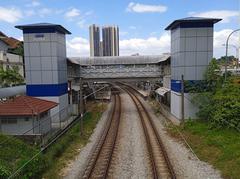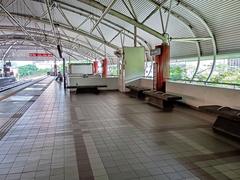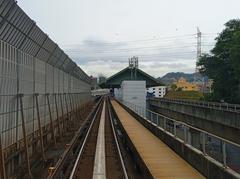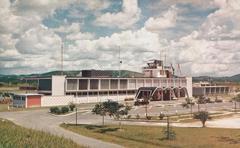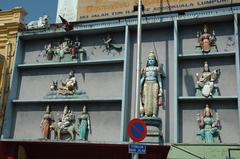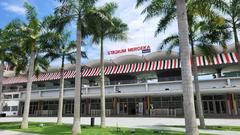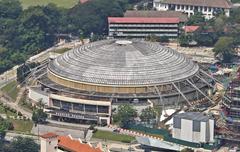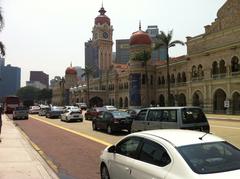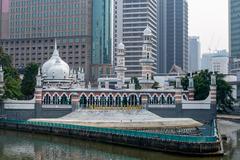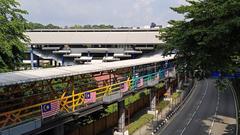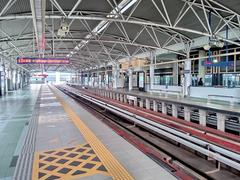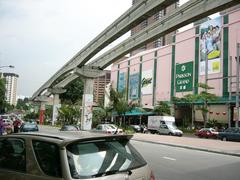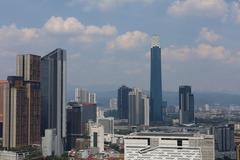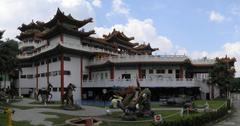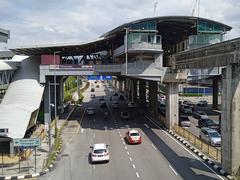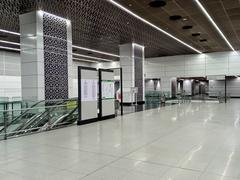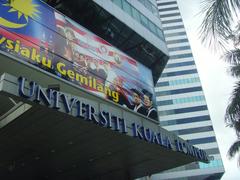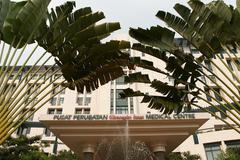
Sin Sze Si Ya Temple Kuala Lumpur: Visiting Hours, Tickets, and Historical Significance
Date: 03/07/2025
Introduction
Sin Sze Si Ya Temple, established in 1864, is the oldest Taoist temple in Kuala Lumpur and a vital cultural, spiritual, and historical landmark for the city’s Chinese community. Located in the heart of Chinatown, the temple stands as a monument to the city’s multicultural heritage and the enduring legacy of its early Chinese settlers. This guide details everything you need to know about visiting Sin Sze Si Ya Temple—its history, visiting hours, ticketing, architecture, cultural significance, and practical travel tips.
Table of Contents
- Origins and Founding of Sin Sze Si Ya Temple
- Architectural Heritage and Symbolism
- Religious Practices and Community Role
- Visiting Information: Hours, Tickets, and Accessibility
- Key Visitor Experiences and Events
- Preservation and Social Impact
- Frequently Asked Questions (FAQs)
- Summary and Traveler Tips
- Sources
Origins and Founding of Sin Sze Si Ya Temple
Sin Sze Si Ya Temple was founded in 1864 by Kapitan Yap Ah Loy, a pivotal figure in Kuala Lumpur’s early history who played a crucial role in transforming the city from a mining outpost into a thriving urban center (kualalumpurcity.my). The temple honors two deified personalities, Sin Sze Ya (Kapitan Sheng Meng Li of Sungai Ujong) and Si Sze Ya (Yap Sze), both of whom guided and protected Yap Ah Loy during the Selangor Civil War.
The temple’s establishment marked a significant milestone for the Chinese immigrant community, serving as both a spiritual refuge and a center for communal administration and conflict resolution (lamjo.tripod.com). Initially managed by the dominant Hakka community, the temple’s governance evolved in 1907 to include representatives from various Chinese dialect groups, promoting unity and inclusivity (Wikipedia).
Architectural Heritage and Symbolism
Sin Sze Si Ya Temple is a striking example of Southern Chinese temple architecture, meticulously aligned according to feng shui principles to optimize spiritual energy (Yu Hotel Chinatown). Key architectural features include:
- Prominent Gateway: Inscribed with wishes for national prosperity and safety, flanked by stone guardian lions for protection (Scoop).
- Sweeping Roofs: Adorned with ceramic figurines of mythical creatures such as dragons and qilin, symbolizing protection and auspiciousness.
- Main Hall and Side Chambers: The main prayer hall, elevated and richly decorated, houses statues of the patron deities. Side chambers contain altars to other Taoist and Buddhist figures, reflecting syncretism in local Chinese religious practice.
- Courtyards: Open courtyards allow for ritual gatherings, incense offerings, and natural ventilation.
- Ornate Woodwork: Doors, beams, and altars are embellished with intricate hand-carved reliefs depicting mythology and auspicious motifs.
- Incense Coils and Lanterns: Large spiral incense coils and red lanterns suspended from the ceiling fill the temple with fragrance and a warm glow (Yu Hotel Chinatown).
Traditional building materials—hardwood, stone, and glazed tiles—have been carefully preserved through multiple restoration projects (Omeeyo).
Religious Practices and Community Role
Sin Sze Si Ya Temple remains an active center for Taoist worship and community gatherings. Major deities venerated include Sin Sze Ya, Si Sze Ya, Bai Hu Ye (White Tiger Deity), Tai Sui Ye, Cai Shen Ye (God of Wealth), and Guan Yin Pu Sa (Goddess of Mercy) (lamjo.tripod.com).
Rituals and Festivals
- Kau Cim (Fortune Telling): Visitors may participate in the traditional practice of shaking fortune sticks to receive written or interpreted guidance (Lonely Planet).
- Incense Offering: Lighting incense for prayers and blessings.
- Festivals: The temple is especially vibrant during Chinese New Year and the Hungry Ghost Festival, when rituals, lion dances, and decorative displays attract large crowds (holidify.com).
The temple also serves as a hub for educational and charitable activities, with a significant portion of its income supporting local schools and hospitals (lamjo.tripod.com).
Visiting Information: Hours, Tickets, and Accessibility
- Visiting Hours: Sin Sze Si Ya Temple is generally open daily from 9:00 AM to 6:00 PM. Some sources mention earlier opening hours (as early as 7:00 AM), but 9:00 AM is the most consistently reported (safarway.com, trip.com).
- Admission: Entry is free; donations are welcomed to support temple upkeep and community programs.
- Guided Tours: Available upon request or through local operators, offering historical context and deeper understanding of rituals.
- Accessibility: Ramps are available at the entrance, making the temple accessible for wheelchair users, although some internal areas may have steps or uneven flooring.
- Location: 113A, Jalan Tun H S Lee, Kuala Lumpur, within easy walking distance of Pasar Seni LRT station and other major attractions.
Key Visitor Experiences and Events
- Atmosphere: The temple offers a peaceful escape from city bustle, with the scent of incense and soft chanting creating a tranquil environment.
- Cultural Etiquette: Modest dress is recommended; remove shoes before entering prayer halls. Photography is allowed in most areas, but avoid flash and respect worshippers.
- Artifacts: See historic relics such as late-19th-century sedan chairs and memorial plaques to the city’s Chinese pioneers.
- Special Events: Chinese New Year and other festivals are marked by elaborate decorations, performances, and increased visitor activity.
Preservation and Social Impact
Sin Sze Si Ya Temple is a recognized heritage site, protected under local regulations and the focus of ongoing conservation efforts (trip.com). Its adjacent Pioneers of Kuala Lumpur Museum offers educational exhibits on the city’s founding and the evolution of the Chinese community (Scoop). The temple’s trust committee continues to support philanthropic initiatives, donating substantial resources to education and healthcare (lamjo.tripod.com).
Frequently Asked Questions (FAQs)
Q: What are the Sin Sze Si Ya Temple visiting hours?
A: Generally from 9:00 AM to 6:00 PM daily. Some sources mention earlier opening (from 7:00 AM), but 9:00 AM is most consistent.
Q: Is there an entrance fee?
A: No, admission is free. Donations are appreciated.
Q: Are guided tours available?
A: Yes, upon request or through local tour operators.
Q: Is the temple accessible for wheelchair users?
A: Yes, ramps at the entrance are provided, though some internal areas may have steps.
Q: What are some nearby attractions?
A: Central Market, Petaling Street (Chinatown), Sri Mahamariamman Temple, and Merdeka Square.
Q: Is photography allowed?
A: Yes, in most areas. Please avoid flash and be respectful during prayers.
Summary and Traveler Tips
Sin Sze Si Ya Temple is a living testament to Kuala Lumpur’s multicultural roots, Chinese heritage, and community resilience. Its founding by Yap Ah Loy, rich Southern Chinese architecture, and ongoing religious and philanthropic activities make it a must-visit destination for history lovers, spiritual seekers, and cultural explorers alike (kualalumpurcity.my, yuhotelchinatown.com). To get the most from your visit:
- Arrive early or late in the day for a peaceful experience.
- Dress modestly and maintain respectful behavior.
- Explore surrounding heritage sites to enhance your understanding of Kuala Lumpur’s history.
- Check the temple’s official website or contact staff for current events and guided tour availability.
For real-time updates and curated walking tours, download the Audiala app and follow official channels for news about Kuala Lumpur’s historical sites.
Sources and Further Reading
- Sin Sze Si Ya Temple: A Historic Kuala Lumpur Taoist Temple – Visiting Hours, Tickets & Attractions Guide (kualalumpurcity.my)
- Sin Sze Si Ya Temple travel guide (trip.com)
- Sin Sze Si Ya Temple Visiting Hours, Tickets, History, and Architectural Highlights in Kuala Lumpur (Yu Hotel Chinatown)
- Sin Sze Si Ya Temple Visiting Hours, Tickets & Guide to Kuala Lumpur Historical Sites (safarway.com)
- Sin Sze Si Ya Temple Historical and Cultural Overview (lamjo.tripod.com)
- Scoop article on temple and museum
- Omeeyo: Temple sightseeing


